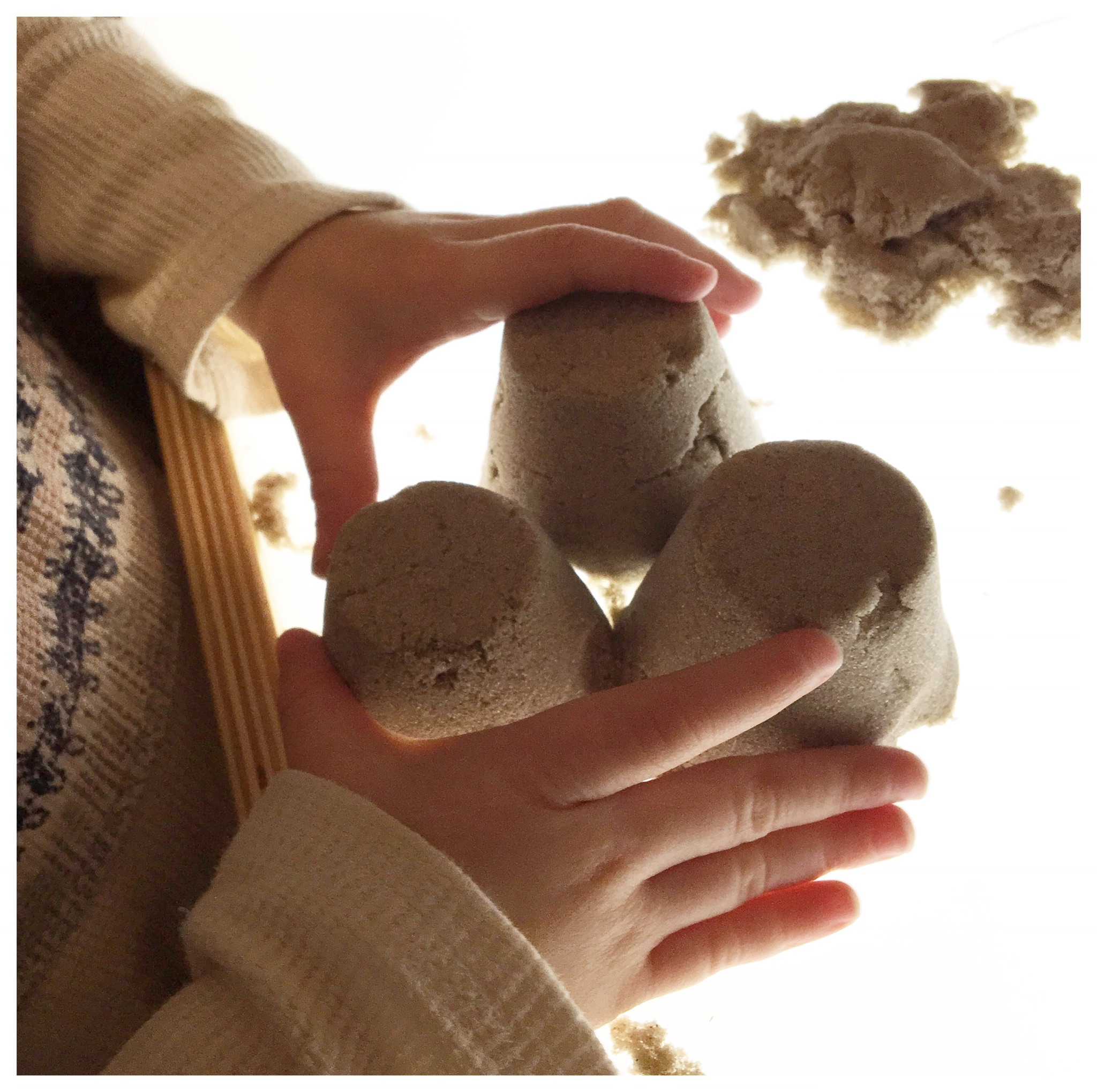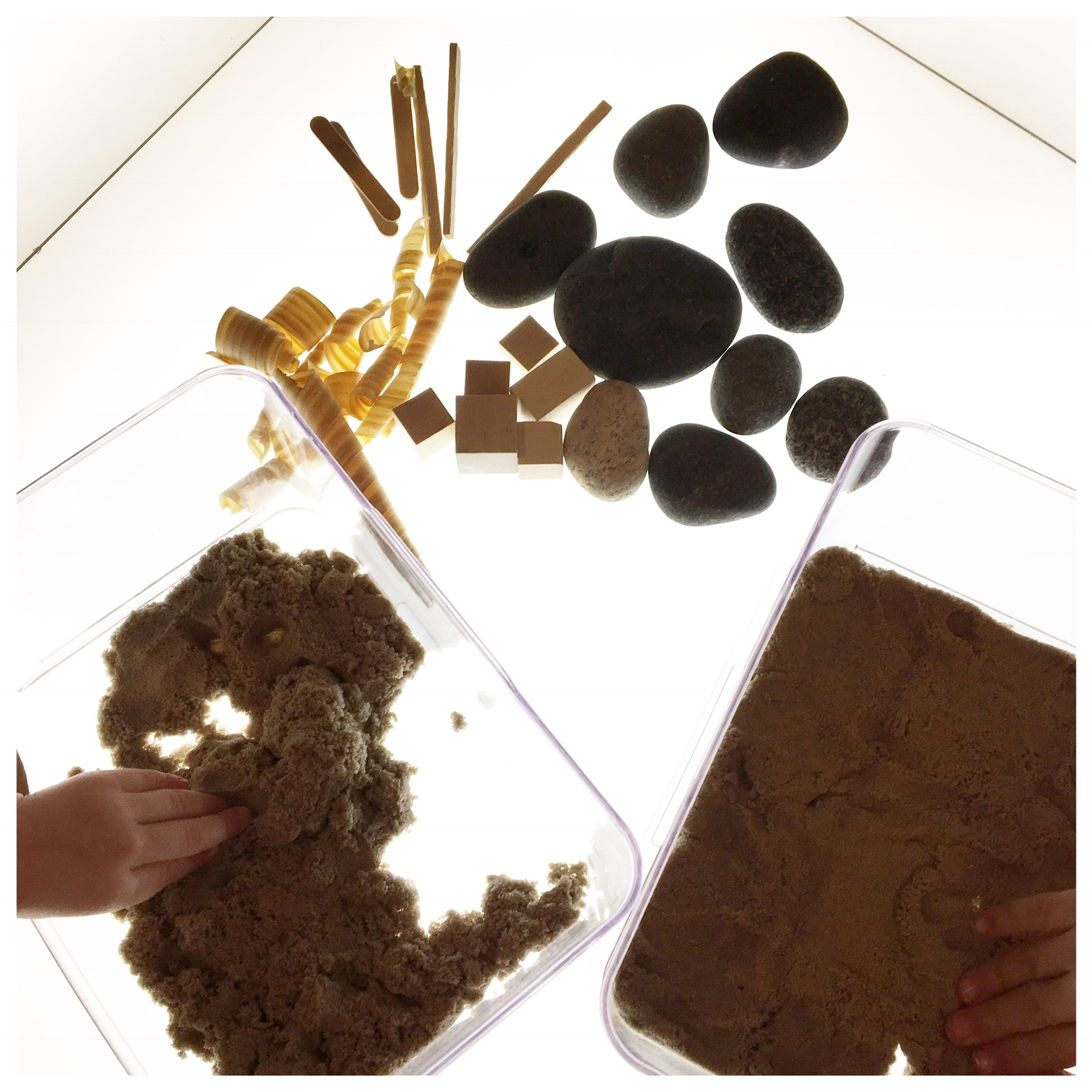Crying is Allowed
/“The wider the range of possibilities we offer children, the more intense will be their motivations and the richer their experiences. We must widen the range of topics and goals, the types of situations we offer and their degree of structure, the kinds and combinations of resources and materials, and the possible interactions with things, peers, and adults.”
People often ask me about the WHY behind the play. Why is it important? What are they really getting out of these activities? Would their time be better spent at lessons or being taught to read and spell? Simply put, no. Their time is SO valuable. And it is my mission to make sure its protected. It is really important to me that my kids have the time to spend being bored, being dreamy, and playing. In an effort to explain why, I am going to take you through a recent experience with my girls.
On this particular morning, I had set up some loose parts and kinetic sand on our light table. When the girls noticed the prompt, they began to work. As I went about my own work, I watched and listened.
My 4year old set to work doing 4 year old things. She scooped the sand and let it slip through her fingers. She squeezed kinetic sand and then filled and dumped from a small container making smooth little mounds. When she was satisfied, she added wire and wood chips to her little structure.
My 7 year old, on the other hand, set to work doing important 7 year old things. Same materials, different developmental stage. The seven year old smoothed out a block of sand and then used the loose parts to write the word “LOVE” in the sand. She shaped her letters out of rocks, sticks, negative space, and wood beads that she retrieved from our art cabinet. She rearranged the letters and spoke out loud about her spelling. Making sure "LOVE" was spelled correctly was really important to her.
As the girls worked side by side, something important happened. Something more important than letter writing, fine motor work or sensory exploration. What happened? The girls ARGUED. Sloane, at just four years old, is at an impatient moment in time. She wants what she wants NOW. Ruby, at seven, can be equally impatient, but in a different way. She doesn’t want her work touched by sticky little fingers and she especially does not want to give up what she is using in an unreasonable time frame. At seven, she is much more reasonable than at four. She doesn't remember what it feels like to be four and so, she does not want to give in to four-year-old demands. As you can imagine, this can lead to conflict. With conflict comes learning, and that is the most important thing to me.
The argument went down like this. Ruby picks up the small silver cup that Sloane was using a few moments earlier. Sloane screams and yells at Ruby that it’s HER cup. Ruby calmly replies that she is using it and will give her sister a turn when she is finished. Not good enough. Sloane throws herself to the floor sobbing about the cup. Ruby tries to talk her off the ledge, but unless Sloane has the cup in her hand, it's not good enough. Clearly, Ruby is not giving up the cup. This goes on for three or four minutes. The tired mom in me fights the urge to get an indenticle cup from the cupboard and make Ruby trade. But, the teacher in me forces myself to give them space to figure it out. Eventually, Ruby is finished with the cup. She tells Sloane, but Sloane is too far gone. Sloane is committed to her outburst. She carries on crying, and Ruby carries on working at the table. And then suddenly, Sloane stands up, wipes her tears and announces, "I’m done crying now. Ruby, you can keep the cup. I'll use this stick to poke holes instead." No one intervened, no one gave in to her demands, she had simply worked through it in her own time. She was ready. She had taught herself to cope.
Children need to have the opportunity to argue and test emotional ideas. Often, we solve these issues FOR children. We “teach” them rules and phrases for sharing. We inject adult notions of “fairness” into these innocent earlychildhood experiences. But don’t we KNOW that children learn best by doing? I know that. I’m sure of it. With that being the case, I know they need the opportunity to try crying as a tool, to try talking, to try grabbing, and to eventually find the right tool. I want them to learn how a peer might respond if they grab or cry. I want them to learn how to communicate by communicating. I want them to learn to negotiate materials, space and ideas. This is why play is so important for all children.





